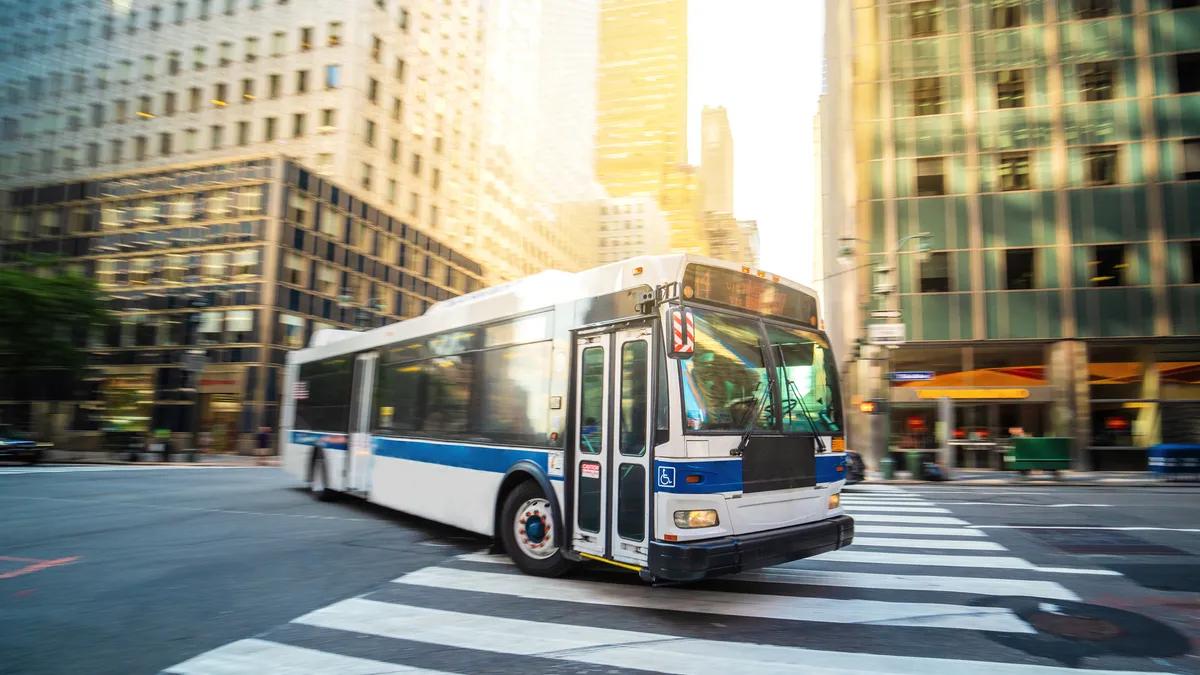Dive Brief:
- A pilot program that eliminated fares on five bus routes in New York City will come to an end this year after state legislators chose not to include funding for the program in the fiscal year 2025 budget that passed April 20.
- The $15 million program, which launched Sept. 24, 2023, enabled one fare-free bus route in each of the city’s five boroughs for a period of six to 12 months.
- Legislation introduced by New York State Sen. Michael Gianaris and Assembly member Zohran Mamdani to expand the program to three bus routes in each borough was not included in the FY 2025 budget agreement.
Dive Insight:
Dozens of U.S. cities have implemented or experimented with fare-free public transportation. Many programs are limited to specific routes or are available only to specific riders, such as older adults or those 18 years of age or under.
In Boston, three bus routes operated by the Massachusetts Bay Transportation Authority began running fare-free on March 1, 2022, after a pilot program saw ridership jump 38% on one route. Other cities have tried universal basic mobility programs that give money to low-income residents for use on public or last-mile transportation such as shared scooters and bikes.
“Free and heavily discounted bus fares are a tool to achieve New York's climate goals and to ensuring that disadvantaged communities underserved by transit - including people with disabilities who are shut out of the inaccessible subway system - can [have] access to jobs, education, and health care,” said Justin Wood, director of policy at New York Lawyers for the Public Interest, in an email.
Mamdani and Gianaris introduced legislation respectively in the state Assembly and Senate to direct the New York Metropolitan Transportation Authority to allocate $45 million of state funds to expand the fare-free bus program to at least 15 bus routes for one year. The bills were referred to committees in each chamber.
Aside from the loss of the fare-free bus program in New York City, public transportation advocates applauded the state’s FY 2025 budget, which provides more than $8.7 billion in transit operating funds statewide. “In back to back budgets, riders demanded and Albany delivered more frequent public transit service,” said Riders Alliance Executive Director Betsy Plum in an emailed statement. “Bus service increases save riders precious time and make the bus a better way to get around our city.”
Correction: A previous version of this story contained an error in a quote from Justin Wood regarding the accessibility of New York's transit system.












